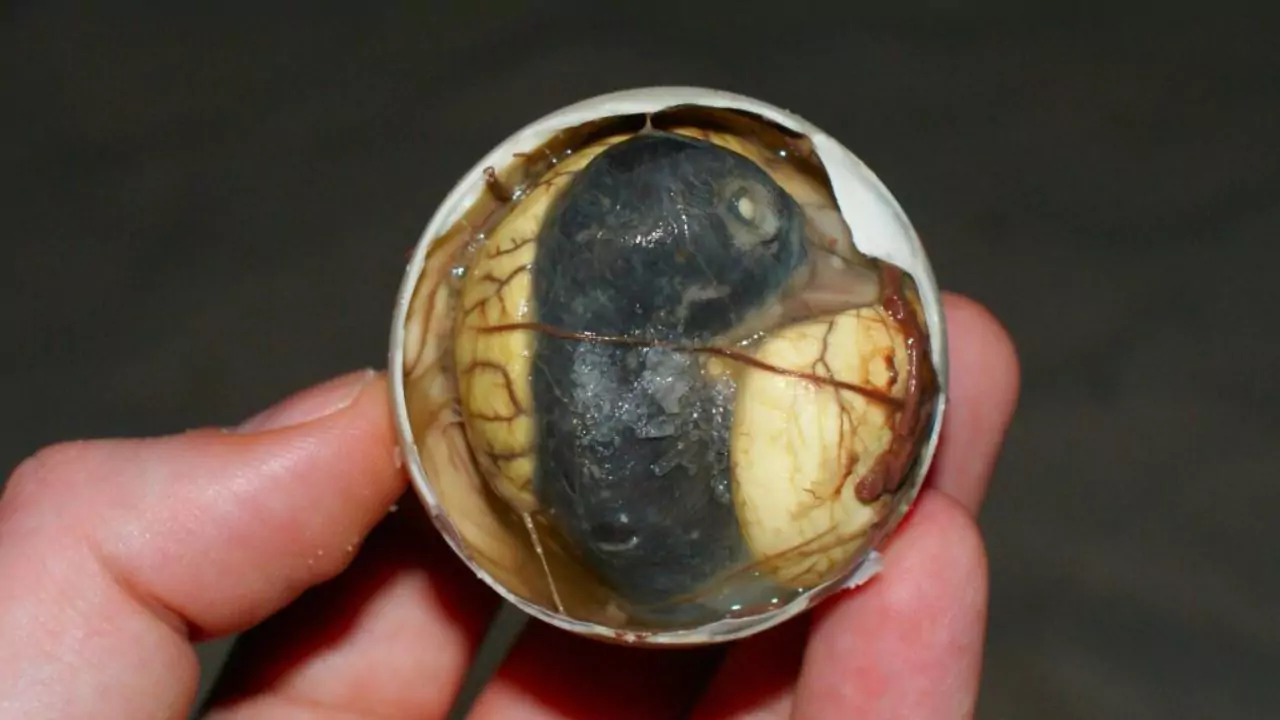When visiting another country, a true foodie never hesitates to fully immerse themselves in the local cuisine. However, there comes a point at which our bizarre culinary experiences turn into bizarre ones. Have you ever wondered which foods are the strangest? And what are their names?
Table of Contents

Most of the time, weird foods are just different from what you’re used to, but occasionally, it’s easy to categorize them as disgusting foods. When it comes to meals, are you an adventurous eater or do you prefer to stick to the tried-and-true favorites? To try some of these strange foods, you might need to be a little more prepared than a picnic, but at least you can brag that you’ve tried some of the strangest things on the planet. Let’s explore the world’s strangest (and occasionally grossest) foods and their unusual names.
1. Locusts, Israel

When do locust plagues cease to be regarded as an annoyance? Naturally, when they’re a delicacy in the area! Well, plagues of anything will always be a nuisance, but at least this one doubles as a crunchy, Kosher snack too. Since locusts are a major source of protein and the only insect deemed Kosher
Israelis eradicate these pests while also benefiting from their consumption. Locusts covered in chocolate and deep-fried are literally taking over the streets in droves. Will you have the fortitude to bite into it? Although some of the strangest foods are undoubtedly insects, don’t be shocked to see some spooky creatures on a few menus across the world.
2. Century Egg, China

Century eggs, also referred to as thousand- or hundred-year eggs, are a traditional Chinese egg-based delicacy. Let’s say they preferred not to refer to it as a rotten egg, even though that is precisely what it is. It is created by storing duck, chicken, or quail eggs for months at a time in a solution of salt, clay, and ash; by that time, the yolk has turned dark green or grey and is strongly scented with sulfur. This might be one of the most bizarre foods you can taste in China.
3. Jellied Moose Nose, Canada

Native Americans in Alaska and Canada hunted moose for food in the 1830s, and they used every part of the animal. The recipe was even featured in the 1967 publication of the Northern Cookbook. In addition to requiring finding a moose, the recipe is labor-intensive because the moose’s nose must first have its hair removed before it can be boiled and then again, and then it must be covered with a broth that solidifies into a jelly. Here it is: a jellied moose nose! It is most likely among the craziest foods you have ever tasted.
4. Casu Marzu, Italy

Do you enjoy unusual cheeses? Alright, so what about rare cheeses that have live maggot infestations? Too much? This next strange dish is Italian, so it must be good, right? Casu marzu, also called “rotten cheese,” is a Sardinian treat made from Pecorino that has long since past its prime. Then, to make things even stranger, cheese flies’ (Piophila casei) larvae are added to the Pecorina. After hatching, the larvae burrow inside the cheese, digest the fats, and turn the product into a soft, creamy cheese. You can decide whether or not to eat yours with the maggots.
5. Fried Tarantulas, Cambodia

Under the Khmer Rouge regime, starving Cambodians first started eating spiders, an eight-legged dish with a sordid past. The hairy arachnids are still regarded as a favorite snack across the nation today; in fact, a town in Cambodia called Spiderville got its name from its residents’ obsession with eating spiders. They taste somewhat like crab, so maybe you can embrace this new trend of eating bugs for food.
6. Stargazey Pie, England

Even though the name of this dish sounds romantic, it’s unlikely to be served at a dinner table on a date night. This strange dish, also called starry gazey pie, comes from Mousehole, an English Cornish village. This dish, which is customarily served on December 23rd, might seem more enticing given its backstory.
According to legend, a brave sailor in the sixteenth century braved strong storms to row out one December evening and returned with a catch large enough to feed the starving villagers. Pilchards, eggs, and potatoes are baked under a pastry crust to make a Cornish pie; the fish heads must protrude from the pie to give it its name.
7. Tuna Eyeballs, Japan

In Japan, every last bit of tuna is consumed, all the way up to the eyeballs. Enter our next weirdest food tuna eyeballs. Since they are inexpensive in your neighborhood supermarket, be sure to include them on your shopping list the next time you make a grocery store run.
These fish delicacies can be found on menus in restaurants all over the nation, if you have the courage to try them. Of course, there are numerous ways to prepare tuna eyeballs, but boiling or steaming them, seasoning them them with soy or garlic, and enjoying them them is the simplest method! It may surprise you to learn that tuna eyeballs taste more like squid than like tuna, this bizarre food.
8. Balut, Philippines

And now for another egg treat: balut from the Philippines. Balut: What is it? It’s basically a fertilized egg, usually a duck egg, that has been developing for two to three weeks. It is then boiled alive and eaten straight out of the shell, seasoned with vinegar, chili powder, and salt. whole embryo included? Indeed. Traditionally, the process involves taping a hole in the top, draining the flavorful liquid, and then crunching the remaining developed egg, bones and all.
9. Huitlacoche, Mexico

Interested in trying corn fungus? Not even considered. But once you try this strange Mexican food, you might have a change of heart. Huitlacoche, a delicacy from the area that is essentially a sick corncob, is also referred to as corn smut or Mexican truffle. In summary, the plant disease that causes huitlacoche grows on corn ears, encircling the kernels, and manifests as puffy, gray clouds. This strange dish, which is highly regarded as a culinary specialty, seems to have an earthy, woodsy flavor from the fungus.
10. Surströmming, Sweden

Once you smell this Swedish treat, you might not even be able to try it. Not so scary after all—surströmming, or fermented Baltic Sea herring with a hint of salt, has been a mainstay of Swedish cooking since the sixteenth century. However, you might have second thoughts after learning that surströmming literally translates to “sour herring” and has a similar scent.
Just enough salt is used in the preparation of this strange dish to keep the raw herring from going bad during the fermentation process. You can smell that herring before you see it, at least after six months. A newly opened can of surströmming has one of the most putrid food smells in the world. Nevermind, can you even eat this strangest food?
Conclusion
Go beyond the typical and allow the strange to dance with your taste buds! The world offers up a smorgasbord of the bizarre, from the fermented shark, Hákarl, in Iceland to the fertilized duck embryo delicacy, Balut, in the Philippines.
Imagine melt-in-your-mouth tuna eyeballs from Japan or maggot-packed Sardinian cheese, Casu Marzu. Take a risk and try something new, like Mexican omelets made with ant larvae, Thai fried grasshoppers, or even Canadian jellied moose nose. Good food, explorer! Just keep in mind that occasionally the strangest bites end up being the most memorable.








